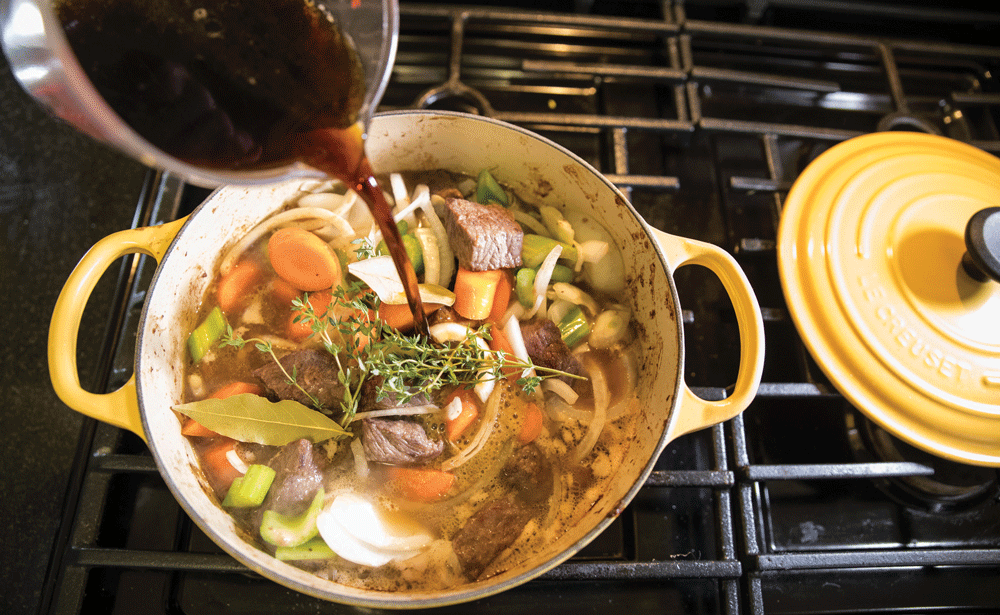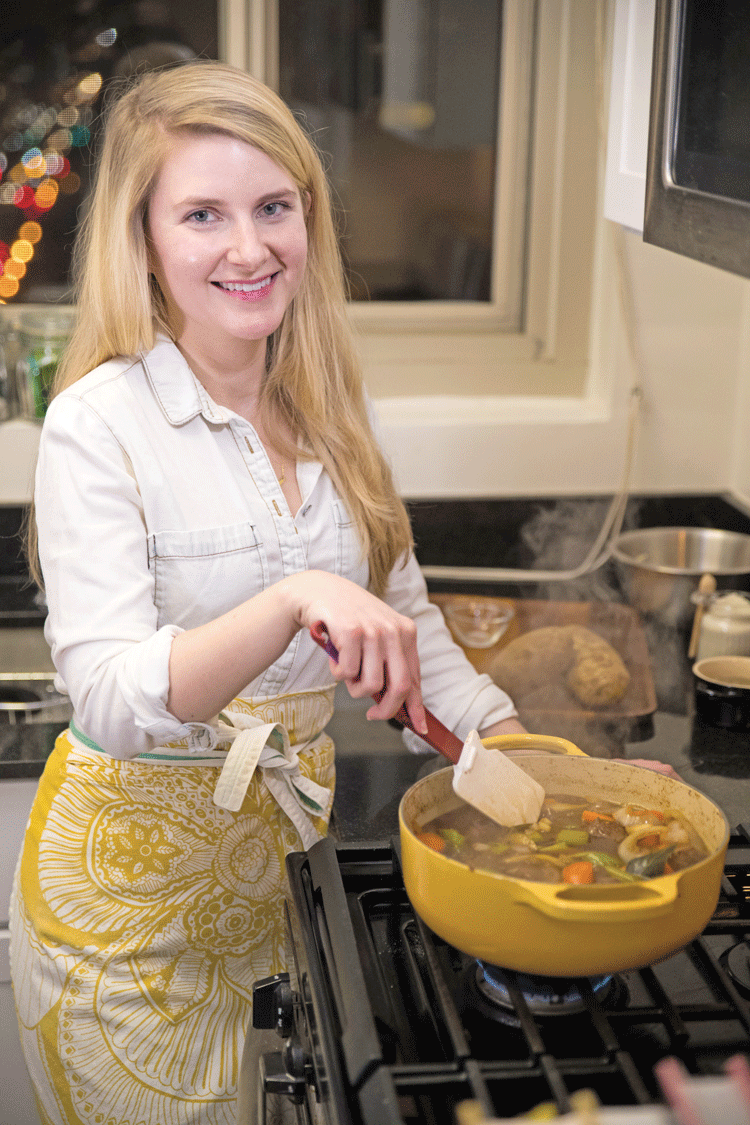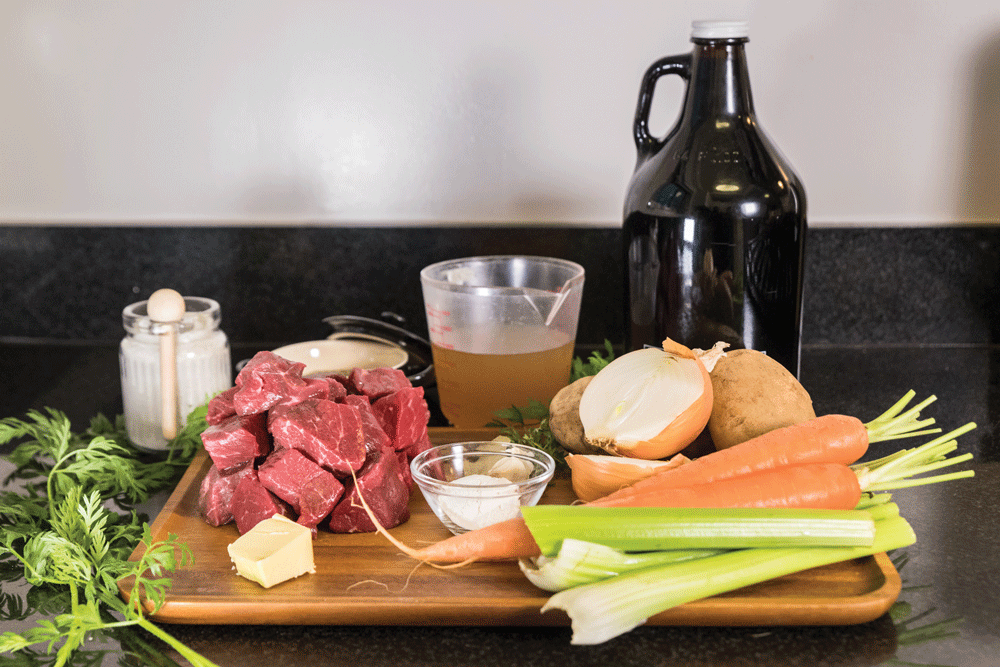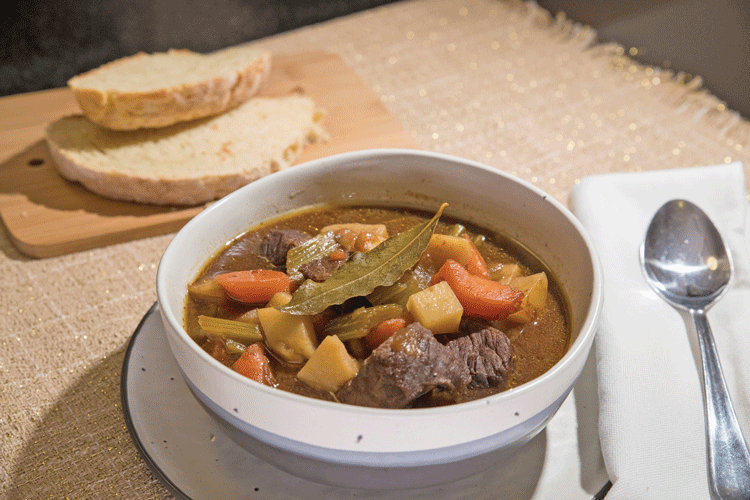Celebrating Irish History & Heritage with Traditional Recipes

By Kaitlin Hill
Photos by Callie Broaddus
For many, St. Patrick’s Day can be a blur of green beer and bad decisions, but, as the proud daughter of Northern Irish ancestry, I like to celebrate a little differently. In our house, March 17 is a time to celebrate our heritage, Irish history, and, of course, favorite Celtic cuisine. After all, before pub-crawls and parades, that’s how the holiday was traditionally observed, following St. Patrick’s death more than a thousand years ago.
Named for the patron saint of Ireland, St. Patrick’s Day was initially a religious holiday of modest merriment. In 9th and 10th century Ireland, the holiday was more commemorative than celebratory. Irish families paid their respects to St. Patrick and his many legends with a trip to church and a small break from Lenten sacrifice for a special meal. The celebrations of yesteryear were far from the city-sized parades and booze-centric festivities that come to mind today. In fact, until 1970, Irish law mandated that pubs close on St. Patrick’s Day out of respect for his holiness. Though March 17th would morph markedly over the millennium since its inception, change was slow coming and largely happening on American soil.

Interestingly, the first St. Patrick’s Day Parade was not in Ireland, but in New York. On March 17, 1762, Irish soldiers serving in the English army took to the streets of The Big Apple, blasting traditional music as a way to diminish their homesickness. The parade aspect of the Celtic celebration grew in popularity in the States as the number of Irish immigrants expanded. As early as 1813, parades were being held in every major city from Chicago to Savannah—both cities lay claim to today’s popular green-dyed river visual.
In 1845, at the start of The Great Famine in Ireland, around 1 million poor Irish flooded into America to avoid starvation. Thick accents and foreign traditions often led to unflattering stereotyping and isolation at the hands of their new American neighbors. As a result, the parade, still an expression of homeland longing, also became a display of ancestral and cultural pride in the face of bias.

These days, that bias is long gone. As it is, on St. Patrick’s Day everyone wants to be Irish, and those of us who actually are try to be generous enough to tolerate it…for a day.
But what it means to really be Irish remains the same. It is more than wearing green and drinking Bushmills. It is pride. And it is longing. Proud of our ancestors and, at least in my case, longing to feel connected to them.

I feel most in tune with my Irish roots when cooking Irish food, and this St. Patrick’s Day I plan to celebrate with a feast of Irish Stew and Soda Bread – two classics I can imagine my ancestors enjoying. My Irish Stew is inspired by a recipe my dad found and forwarded to me while traveling in Ireland. As for the soda bread, I was surprised to learn that like the famous parade, its roots are also American, Native American, actually. Though the Native Americans, pioneers in leavening without yeast, invented the bread, it became a hit in Ireland after the famine and is still on nearly every Irish table today. Celebrate this March 17th with these traditional recipes, and you too can be Irish, even if only for the day.

Soda Bread Recipe:
Ingredients
4 cups all-purpose flour
1 tablespoon sugar
1 teaspoon baking soda
1 1/2 teaspoons salt
1/2 stick of very cold butter, cubed
1 3/4 cup cold buttermilk
1 egg
Directions:
Preheat your oven to 375 degrees.
Whisk together the flour, salt, baking soda and sugar in a large bowl.
Next add your cold cubed butter. Using a pastry cutter work the butter into the flour mixture. Continue to work the butter into the flour until it is the size of peas.
In a separate bowl, whisk the egg and cold buttermilk together.
Pour the wet ingredients into the dry. Gently fold the wet ingredients into the dry using a spatula.
The dough will look lumpy and will be very wet.
Dump the dough out onto a generously floured work surface and knead a few times until the dough forms a smooth ball.
Transfer the dough to a sheet tray lined with parchment. Using a very sharp knife mark the top of the dough with a large “X.”
Place the dough in the preheated oven. Bake for 25 minutes, then rotate the pan and bake for 25 minutes more. Test the bread by inserting a toothpick into the center. If the toothpick has wet dough clinging to it, the bread needs to bake longer. Return to the oven for another 10 minutes. The total bake time will be between 50 and 60 minutes depending on your oven.
Once the bread is golden brown and the test toothpick comes out clean, it is finished baking. Remove from the oven and allow to cool slightly. While the bread is still slightly warm, slice and enjoy.
Irish Stew:
Ingredients
1 ¼ pounds beef stew meat
1 tablespoon flour
1 tablespoon butter
1 large onion, sliced
4 stalks of celery, cut on an angle
3 carrots, cut on an angle
1 clove garlic, minced
1 ½ cups stout
1 ½ cups beef broth
1 bay leaf
2 – 3 sprigs thyme
2 medium russet potatoes, peeled and chopped
salt and pepper, to taste
Directions:
Heat a large saucepot over medium heat and add the butter. As the butter begins to melt, toss the meat in the flour and season it with salt and pepper. Transfer the meat to the pot and brown on all sides.
When the meat is evenly browned, add the onion, carrot, celery and garlic.
Add the stout, beef broth, bay leaf and thyme.
Bring the liquid to a boil and then reduce to a simmer. Cook at a simmer on medium to low heat for 40 minutes.
After 40 minutes, add the potatoes and cook for an additional 50 minutes until the vegetables are fork tender and the meat is cooked through.
Remove the bay leaf and thyme sprigs and ladle into serving bowls.
Enjoy! ML


